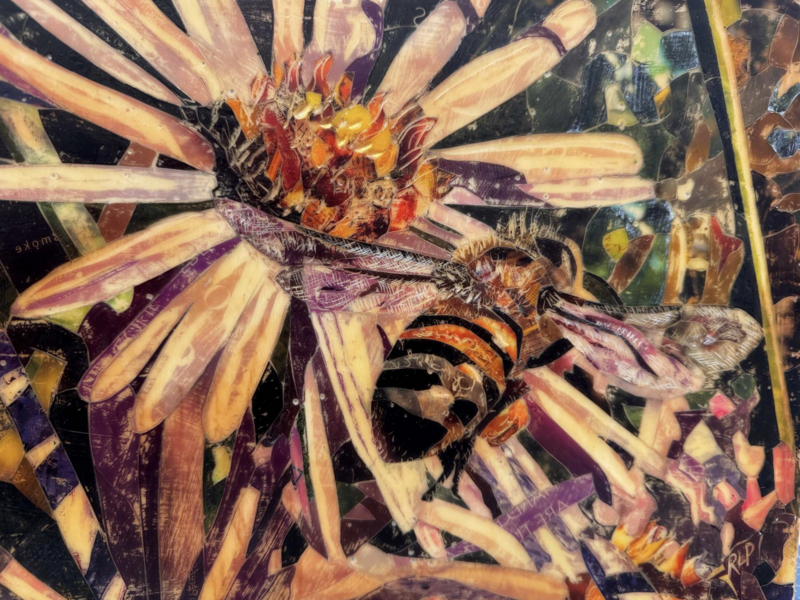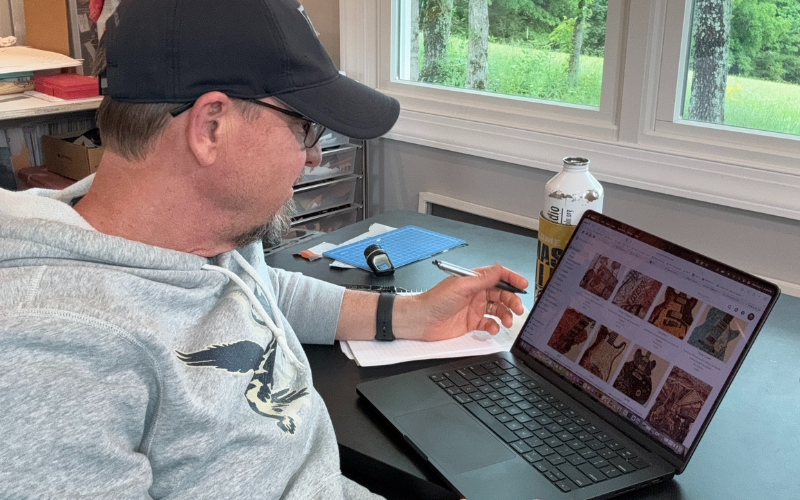What would you tell your younger self, if you could go back to the beginning of your art career?
If you could go back in time and give your younger studio self a bit of guidance—what would you say? For artist Randy Purcell, it would start with a simple truth: you need more than passion—you need a plan.
Randy Purcell is a Tennessee-based visual artist best known for his intricate, amber-glowing works made by transferring magazine ink onto a layer of beeswax...yes, from bees. His process is slow, methodical, and deeply meditative—a rhythm he’s leaned into for over a decade. But behind the beeswax and magazine clippings is a different kind of discipline: documenting, tracking, and staying organized.
Randy opens up about what it’s taken to build a sustainable studio practice, what he wishes he’d known from the beginning, and how one tool has supported (and continues to support) his career for over ten years:
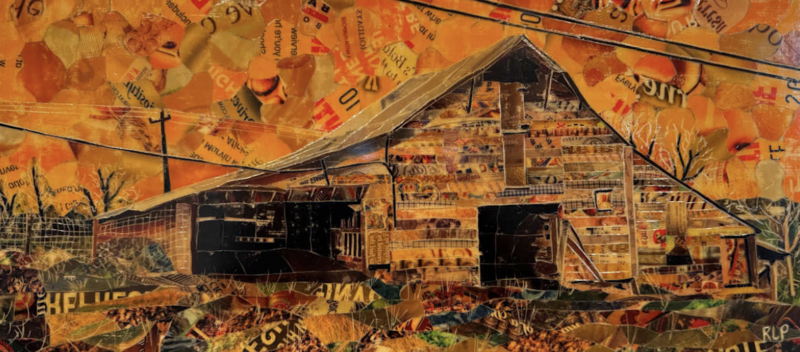
Randy L. Purcell, 'Harvest Glow', 12 x 24 x 2 in
Start by finding something you love enough to stick with
Randy L. Purcell remembers what it felt like to be in the early years of his art career—searching for direction, experimenting with materials, figuring out where he fit in.
"Ten years ago I was still trying to find my place in the art community. I was still trying to fine tune my painting process," the artist reflects. "I knew my process was unique and something I loved doing but I still needed to push myself on subject and technique. I look back and am sometimes amazed at some of the risks I took. I'm also proud that my persistence has finally started paying off."
Today, Randy is represented by three galleries and has developed a signature style using beeswax and magazine ink transfers. What began as a curiosity has grown into a meditative, intentional, and deeply personal art practice. "My art is the result of magazine ink transferred onto a layer of beeswax or encaustic medium. The finished product looks similar to collage but has a very distinct amber glow."
Every painting starts with Randy cutting paper for hours. "It's a very slow process," he explains. "But I do like how I can get lost in my own thoughts as I do this repetitive action."
Build systems that support your creativity
Most days in any artist's studio don’t feel groundbreaking. For Randy, they often involve hours of cutting paper by hand, preparing wax, layering, and waiting.
"My process can be boring and repetitive," he admits. But it's within that repetition that Randy Purcell has found space for reflection, focus, and a quiet kind of momentum. "I rarely have days where I don't want to be in the studio working," he muses. "There are occasions where I need to mix it up and work in other media, catch up on research, social media, or just clean the studio."
What he’s describing is something every working artist eventually figures out: a creative rhythm that’s sustainable. Over time, he created systems (and found one particular tool) to help him stay engaged and organized—especially on the slower days.
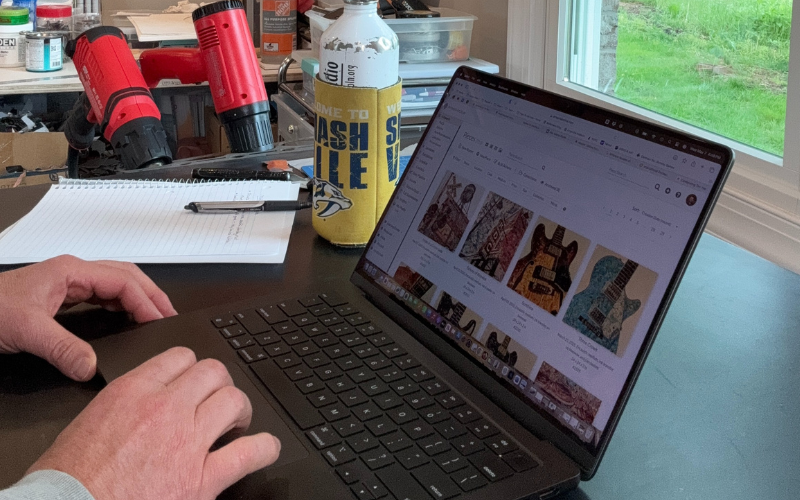
In his Tennessee studio, Randy Purcell organizes his artwork using Artwork Archive’s cloud-based inventory system. Image courtesy of the artist
Get organized early (you’ll thank yourself later)
Back in 2014, Randy was juggling sculptures, paintings, and a growing exhibiiton calendar. Like many artists, he needed a way to stay on top of it all.
"I had found several companies that offered a software to download and basically let you enter things like an Excel spreadsheet, but with a template for artwork," the artist recalls. "Most of those were less than ideal and I could only use it on one device." He needed something better. Something that could grow with him, be accessible from anywhere, and make staying organized feel like a natural part of the creative process.
Then he found Artwork Archive—and has been using it ever since.
"I signed up in September of 2014 when Artwork Archive was still in its early stages. The thing that I loved most was that it did all the things I needed and was still improving."
Randy also found a team that listened. For him, one of the most helpful parts of using Artwork Archive was knowing there was a team on the other side—ready to answer questions, take feedback seriously, and offer support when needed. That part hasn't changed. Whether it’s a support request, a feature suggestion, or a “how do I…?” email, you’ll still hear back from real people who know the platform and care about your practice.
Build habits that make you look like a pro
Over the years—and over a decade of using Artwork Archive—Randy has developed a simple but powerful habit: as soon as a piece is finished, it goes straight into his inventory.
"The first thing I do after completing a painting is add it to Artwork Archive," he says. "I even add a short statement or description in the notes. That way when I send it off to a gallery, I can include a Portfolio Page that gives them something to work with." That extra step saves time later—and makes a huge difference.
When a gallery or collector asks to see a selection of his work, he’s ready. “Galleries and customers are shocked when I respond with info so fast. All I have to do is create a Private Room of those paintings and send a link. Having put in all this info right after completing each painting makes it quick and painless.”
That habit has become second nature—and a big reason his studio runs as smoothly as it does. "I love getting complimented on how organized I am compared to most artists," he mentions. "Plus, it makes me look very professional."
Being organized could save you in the long run
There’s a reason Randy keeps records on every piece—and one moment early in his career made that clear.
The artist was applying to everything he could—shows, galleries, open calls. In all the movement, one painting could’ve easily slipped through.
"I went through a stage where I was trying to get into as many shows and galleries as possible. Thankfully, I was using Artwork Archive at the time. I went into my inventory and saw this painting was in a gallery that I had only been in for a short while. I decided to call the gallery and check in and see if my work was getting any interest."
That call turned out to be more important than he expected.
"I found out they had closed down months before. It took a while, but I finally got in touch with one of the owners. They said it was an unfortunate and quick closing and they intended to reach out to me at some point. I was able to send a copy of my Inventory Report with which paintings they had of mine. Of the ones on the list, one was missing. They ended up paying me, but if I hadn’t been organized and had documents of what I had in the gallery, they may have told me I was out of luck."
Now, he never sends artwork to a gallery without an Inventory Report—and he learned a pretty valuable lesson: having clear documentation can be the difference between losing track—and getting paid.
Always send a record of your work:
Think of an Inventory Report as part of the shipment—just as important as the artwork itself. Randy includes one every time he sends pieces to a gallery. It lists titles, dimensions, prices, and medium—all in one clean PDF.
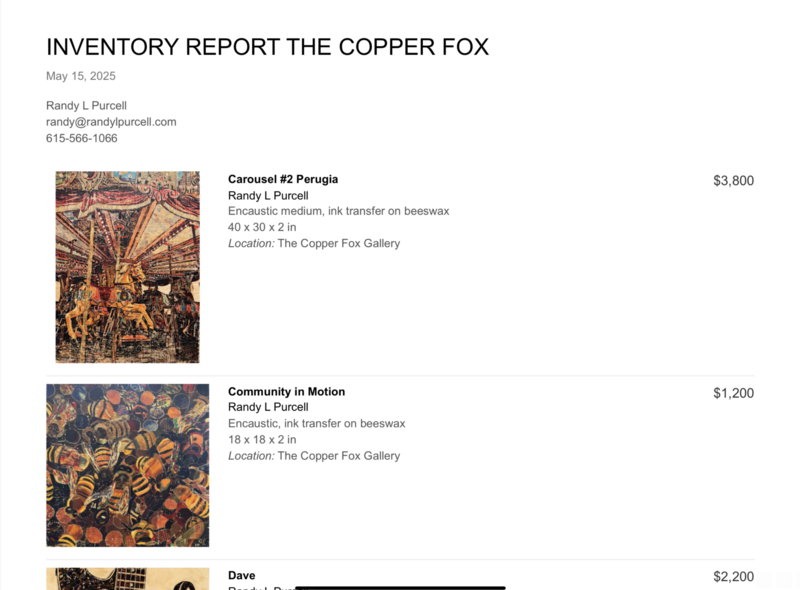
This simple step builds trust, creates a paper trail, and prevents costly mix-ups. And if something goes wrong? You have exactly what you need to follow up and protect your work. See how it can work for your own practice here.
Treat your art like a business (because it is)
If you're building a career from your art, the "boring" details matter. Things like tracking sales, logging expenses, and managing inventory all contribute to long-term clarity and growth.
Randy’s studio runs with that kind of intention. "I’ve learned to treat what I do as a business, not a hobby," Randy points out. "Artwork Archive has many features that make it easy for artists to track sales and expenses. I'm positive having these records has saved me money at tax time."
Each week, he dedicates time to log expenses, update gallery records, and handle the admin. "I think making it a habit is most important," the artist notes. "There are so many great features, but it's easy to forget to use them when you're busy doing other things. I set myself reminders to do things like put in my expenses or update inventory for a gallery." Randy also uses Artwork Archive's built in Schedule to stay on top of dates and logistics. "I love adding dates for exhibits and getting reminders about delivery, openings, and art pick up dates," he says.
For artists trying to build something sustainable, we promise you this: treating your art like a business won't take the magic away. Instead, it will help you create stability, and more mental space to focus on the creative work.
A peek into Randy Purcell's Artwork Archive account:
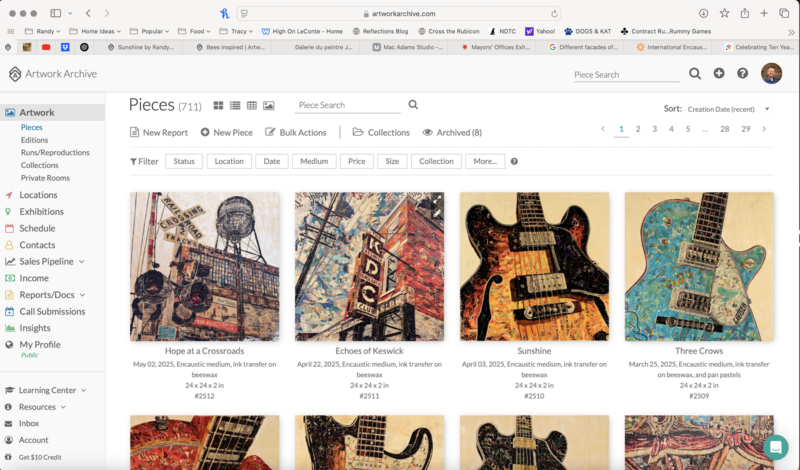
This is how it looks when you treat your art practice like a business.
Randy uses Artwork Archive to track his inventory, log expenses, and prepare for exhibitions—because staying organized isn’t optional when you’re running a professional studio.
Business tools designed for artists can save you time, money, and mental energy. And yes, you’ll still have plenty left for the creative work.
Make space for where you're headed, even when the day-to-day feels full
Randy’s younger self might have waited until things felt more certain. But if there’s one thing he’s learned, it’s that it’s okay to start shaping long-term goals before all the details are in place.
"I'm at a point where I'm represented by three galleries and am doing pretty well selling work. My goal is to continue those relationships and also add in some select exhibits like ArtPrize and ArtFields," he adds. "I've done them before but now that I've grown in my career, I realize I can make a bigger impact in events like this."
This working artist is already mapping out future ideas—like a solo institutional show—and putting thought into what that body of work could look like. "I've been working through ideas of what that series would look like. Because of the amount of time it takes me to create my paintings I do need to plan way in advance."
This is a reminder if you're an artist thinking about what's next: you don't have to wait for the perfect moment to start planing seeds. Your future projects need space now. Just keep the ideas moving—and give them room to grow.
What Randy Purcell hopes people remember
Looking back over the last decade, Randy Purcell has built a successful art career based on an interesting, unique, and deeply personal creative process. But none of it happened by following someone else's blueprint. Instead, it was shaped by curiosity, persistence, and a willingness to share what he’s learned. "The best I could ask for is that I'm remembered as an artist that was willing to try new things; someone who found something cool and stuck with it, and was willing to share his knowledge with others."
He didn’t follow a set roadmap. He played. He tested. He adjusted. And through that process, something meaningful took shape. And when people ask how his process started? "I just play around until something cool happens."
That spirit—open, curious, generous—is at the heart of the studio he’s built. And it’s what he’d want his younger self to hold onto most.
